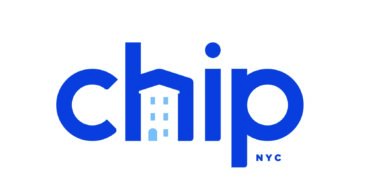September Rent Survey
Survey Shows Rent Pain Continues
CHIP Proposes Solutions To Ease Affordable Housing Woes
(New York, NY) — More than 19% of residential tenants have paid no rent in September and the residential vacancy rate has climbed to 12.55%, according to a survey of the members of the Community Housing Improvement Program (CHIP). The results show that conditions are slowly getting worse. In August, members reported a vacancy rate of 10.78%, and slightly more than 17% of renters paid no rent by the middle of the month.
“For a sixth straight month, housing providers have borne a huge financial burden due to the COVID-19 emergency with little help from the government. We need solutions now. We can no longer wait for the federal government to bail us out,” said Jay Martin, executive director of CHIP.
Our members also report that they are offering concessions averaging a net effect of 1.4 months of free rent to tenants (either through dropping the asking rent or giving a month or two of the lease term rent free) in order to be more competitive on the rental market and combat the growing number of vacant units. Rent-stabilized tenancies, however, are not seeing the same level of rent reductions.
Many CHIP members also have first floor commercial space in their buildings. Our survey responses indicated that roughly half of all commercial tenants paid no rent in September, which was consistent with our August survey.
CHIP received responses from the owners and operators of at least 80,000 units of housing in New York City. The majority of properties surveyed were rent-stabilized. Roughly 40% of responses came from Manhattan, with about 20% coming from Bronx, Queens and Brooklyn respectively. Less than 2 percent of responses came from Staten Island.
“At this point, we cannot expect the federal government to bail out New York City from our current housing crisis. City and State leaders must take steps to stop the bleeding and stabilize the affordable housing ecosystem for both tenants and their housing providers,” said Martin.
CHIP is proposing several solutions to help stabilize the housing market that we are asking the State Legislature to consider. They are:
Reinstate Preferential Rents
The June 2019 rent laws eliminated the usefulness of preferential rents for tenants of rent-stabilized buildings. Under the current system, rent-stabilized housing providers cannot offer temporary discounts on rent without becoming locked into that reduced rent for as long as the renter lives in the apartment. This creates a barrier for these housing providers to provide lower rents, whether because there is a dip in the market or a tenant is experiencing temporary hardship. Rather than being able to offer a discount for one lease term, once an owner charges a lower preferential rent, every future lease must also include the discount. So when there are lulls (or even dips) in the rental market, like there are now, rent-stabilized tenants don’t receive the benefit because the 2019 HSTPA removed the flexibility of preferential rents. If the laws were altered to once again allow this flexibility, more than 50% of CHIP members say they would offer lower rents to rent-stabilized tenants who negotiate for a lower price in their lease renewals or need immediate help because of financial struggles. And roughly 55% said they would be likely to lower the asking rent for a vacant stabilized apartment to remain competitive in a COVID devastated rental market .
Implement Tenant Rent Forgiveness and Rent Increase Tax Offset Program.
New York currently offers SCRIE and DRIE programs to offset rent increases for seniors and disabled persons with property tax credits for housing providers. The programs have been incredibly successful in stabilizing the lives of some of the city’s most vulnerable renters. COVID-19 has dramatically increased the number of at-risk New Yorkers, creating a need to extend this same program to all renters in need. CHIP proposes a pilot program of $500 million in property tax credits for renters who can prove financial hardship caused by COVID-19. Rather than relying on the federal government for relief that isn’t coming, this proposal would allow the city to help housing providers absorb the continuous increases in building operating costs while at the same time providing desperately needed relief to a population of renters so they can stay in their homes and be free of worrying about future increases in rent.
Under this program, renters who can demonstrate the necessary financial hardship can qualify for rental arrears forgiveness that would be offset by a dollar-for-dollar reduction in the housing provider’s property tax payment. A targeted program of tax relief would both insulate tenants from future rent increases and also provide necessary relief on operating expenses. No matter the cost, it is a proportionally small price to pay to stabilize the city’s housing and keep as many people in their homes as possible.
Expand Funding To COVID Rent Relief Voucher Program.
The legislature passed the Emergency Rent Relief Act of 2020 (S8419 / A10522) in June, and Homes and Community Renewal (HCR) began processing applications in August. The initial funding for the program was $100 million. CHIP members report payments through the Act have not covered all of a tenant’s existing arrears but they did bring much needed operating income to the building. Our members (the owners and operators of about 15% of NYC’s residential rental properties) estimated that they have lost at least $500 million in operating income since the start of the pandemic. The existing program is a start to filling this massive gap, but it needs more funding and to expand its eligibility requirements to cover more renters and more arrears. The Act only covers rent losses from April to July, and does not cover the entirety of arrears that were owed by tenants but rather doled out benefits based on a formula that links payments to loss of income and percentage of income paid towards rent.
###



